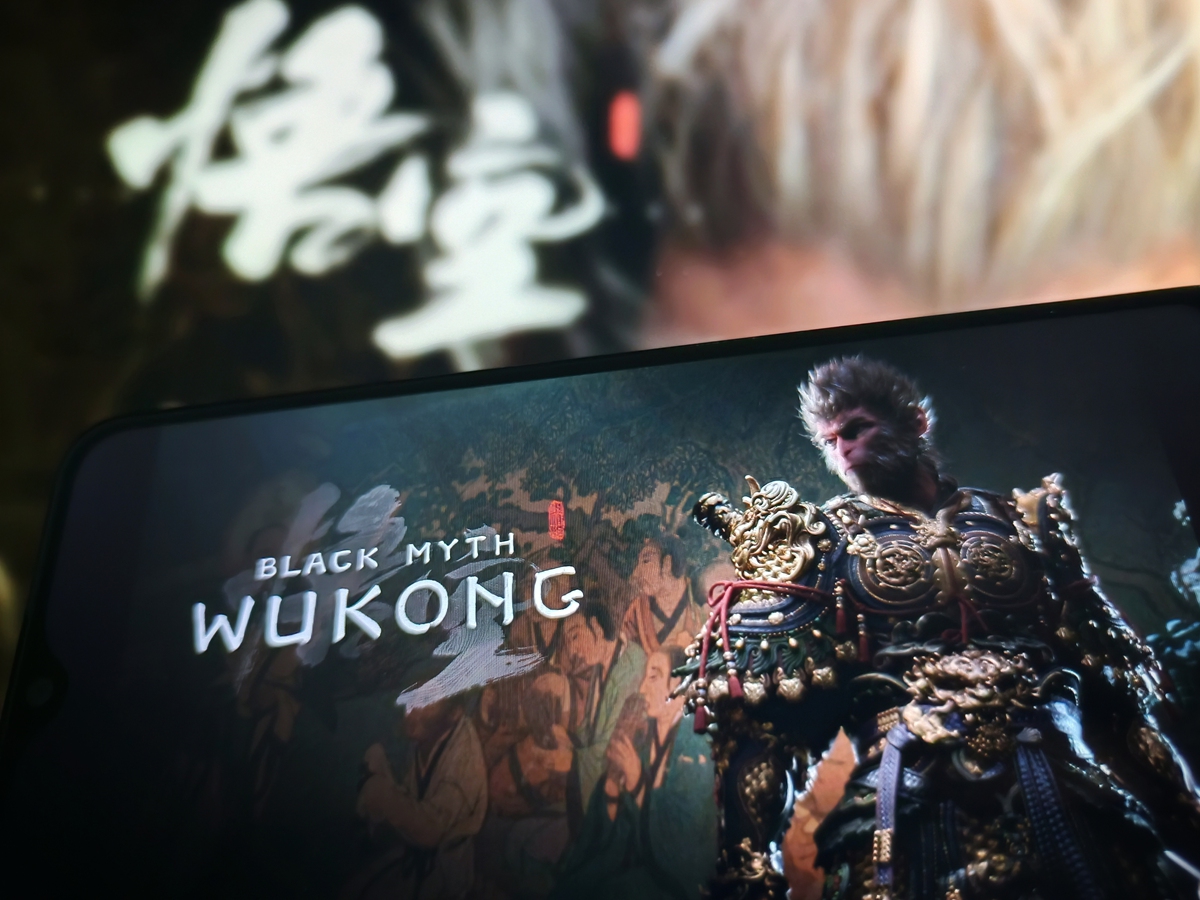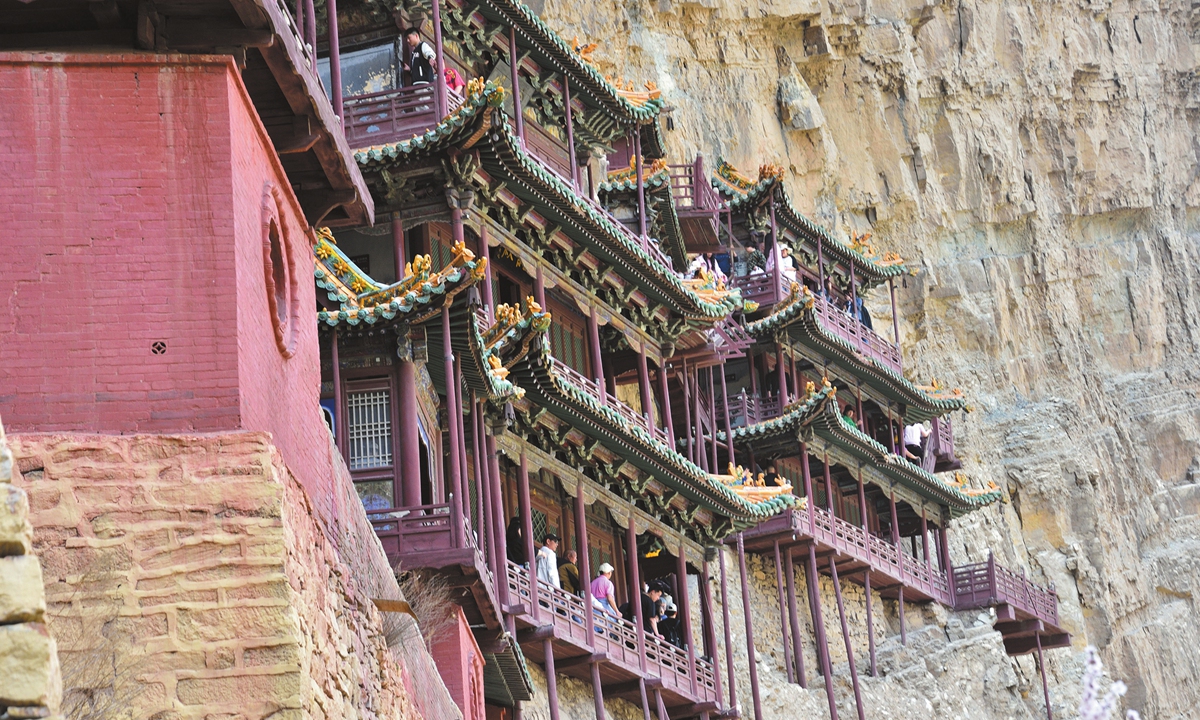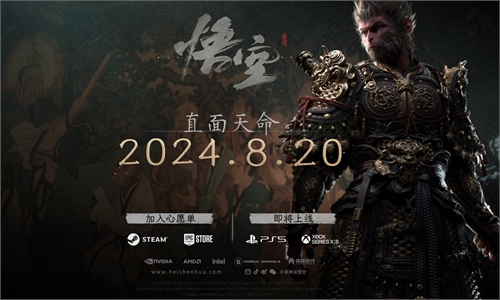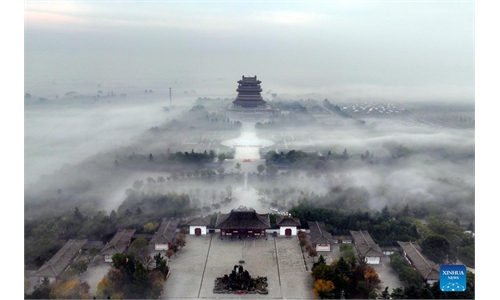
Promotional material for Black Myth: Wukong Photo: VCG
The Hanging Temple in Datong, Shanxi Province Photo: VCG The Wooden Pagoda of Yingxian County in Shanxi Province Photo: VCG
Editor's Note:
The peak number of concurrent players for the Chinese game Black Myth: Wukong surpassed 2.2 million on Steam on Tuesday, overtaking Palworld to become the platform's most-played single player game in history.
During a regular press conference on Wednesday, China's Foreign Ministry spokesperson Mao Ning said that although she is not familiar with video games, the name of this game suggests it draws from Journey to the West, a classic work of Chinese literature. She said this reflects the broad appeal of Chinese culture. As one of the most recognizable public domain IPs in China, the classic novel has had a profound influence on Chinese communities worldwide. This game now marks a new chapter in the Chinese gaming industry's maturity in cultural expression and creativity.
To better present the cultural backdrop of the game to our readers, Global Times reporters Jiang Li and Huang Lanlan interviewed cultural tourism professionals, game studies scholars and the motion capture artist behind this hit action game.

Historic sites
Players have discovered that the game is rich with Chinese culture: The character "Tiger Vanguard" is named after a character from renowned calligrapher and poet Yan Zhenqing's famous Qingyuan Daoist Poem; the battle music features Buddhist chanting; instead of using "dragon" in the English language version of the game to refer to Eastern dragons, the Chinese character for dragon is used.
One of the most striking features is the game's architecture, which is heavily influenced by Buddhist culture and traditional Chinese stone carvings. Black Myth: Wukong recreates the architectural style from Journey to the West in remarkable details through a vast digital archive of ancient Chinese buildings.
Yang Qi, the artistic director at Game Science, described the game as a "cultural tribute." He mentioned that to faithfully reproduce the ancient temples from the original work, the team traveled across China to create the country's first digital archive of ancient architecture.
Numerous historical temples and relics have been meticulously recreated by the studio.
"When rendering the game, we were reluctant to even wipe away the dust, ensuring that the beauty of Eastern architecture was preserved to the fullest. We believe that the digital expression of Chinese culture can transcend borders," Yang said.
The game's setting is based on real locations, many of which feature ancient Chinese architecture. The Shanxi Provincial Department of Culture and Tourism released a promotional video, showcasing various in-game locations, including Xiaoxitian, Yuhuang and Tiefo temples, leading to a doubling of searches for Shanxi tourism on the day of the game's launch.
"The game features extensive elements of Shanxi Province's ancient architecture, statues and murals. Out of the 36 locations featured in the game, 27 are from Shanxi, most of which were 3D scanned by the main creative team," said Yang Jie, a representative from the Shanxi Digital Cultural Experience Center. "The Dazu Rock Carvings, one of the world's top eight grottoes, was featured in the game's opening sequences, with its grand sculptures faithfully recreated. Additionally, Shanxi's famous ancient temples and pagodas appear throughout the game, leaving players worldwide in awe of Chinese culture."
Many tourists have already started to share their travel photos on social media, while popular video blogger Xugong Duchen released several videos introducing the ancient architectural locations featured in the game. He noted that while Shanxi's attractions are worth visiting, some of the locations are remote, and tourism services still need improvement to attract more visitors.

Cultural heritage
As Black Myth: Wukong rapidly gains popularity around the world, numerous overseas players on YouTube are now exploring Journey to the West and learning more about Chinese culture.
Journey to the West is one of the most internationally recognized works of Chinese literature and prominent symbol of Chinese culture, with nearly 200 years of history of global dissemination.
The story has been adapted numerous times in modern media.
Legendary animator Wan Laiming and his team created Havoc in Heaven in the 1960s, the first color animated feature film in China, which later became the foundation of the internationally renowned Chinese animation style.
China Central Television (CCTV) produced the 1986 Journey to the West TV series, which not only achieved nearly 90 percent viewership on CCTV but was also shown in reruns more than 3,000 times, becoming an unforgettable childhood memory for generations.

Yuhuang Temple in Jincheng, Shanxi Province Photo: VCG
"Black Myth: Wukong has opened a door for Chinese game culture, similar to how The Wandering Earth opened a door for Chinese science fiction films. However, the key is to keep this door open and not let it become a fleeting moment," Liu Mengfei, a game studies scholar, told the Global Times.
The game's plot relies heavily on Journey to the West, posing a challenge for those unfamiliar with the original work. This has been noted by many overseas review platforms, including Metacritic and IGN, as one reason why the game did not receive a perfect score. Many overseas players have noted the abundance of unfamiliar cultural elements in the game.
"This sense of unfamiliarity, in translation studies, signifies the presence of culturally unique concepts that are difficult to convey across languages," Liu noted.
"Many similar games cater to the broadest market demand without deeply expressing cultural content, causing foreign players to miss out on understanding Journey to the West and Chinese culture. Cultural export requires the development of content-rich games because games themselves are cultural strongholds," Liu added.
Japan's Dragon Ball by Akira Toriyama heavily borrowed from Journey to the West, including the protagonist's name, Son Goku, the Japanese pronunciation of Sun Wukong.
The US has produced The Monkey King and American Born Chinese, while Australia made The New Legends of Monkey - all heavily inspired by Journey to the West.
Black Myth: Wukong is neither the first, nor will it be the last, adaptation of Journey to the West to gain international attention. The continued multimedia adaptations of the classical novel and its iconic character Sun Wukong attest to the text's enduring popularity overseas.



